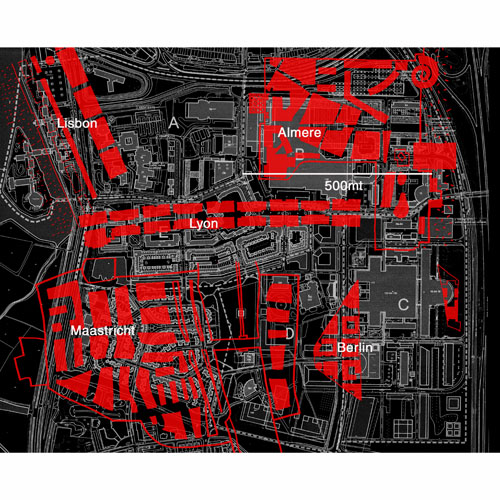Studio Associato Bernardo Secchi Paola ViganòArchitecture | Urbanism | Landscape |
| Randwyck city area in Maastricht |
| client: | Amsteland Real Estate Development BV |
| program: | urban study |
| date: | 2001-2002 |
| consultant: | |
| team: | |
One of the most important parts in Randwyck area are the MECC, a major hospital, offices and housing. Randwyck is a place that shows all the characteristics of a contemporary peripheral space: welcoming every day nearly 12,000 people without offering comfort. This area is yet as large as the historical center of Maastricht and even larger than the ‘Ceramic’ neighborhood, latest major development intervention in Maastricht area. The MECC area , together with the office area is larger than the commercial area of the city center. These dimensions and location are simultaneously a problem and an opportunity. With even a slight densification , the urban fabric could be easily enriched. Shops, cafes, restaurants and some apartments can be installed in the residual spaces near or along the existing buildings. Some interventions on the green zone structure can increase comfort. It is also necessary to ensure, through the introduction of residential and commercial functions the integration of various functions of the three main islands ( the hospital, the university and the MECC). These islands are probably the most important characteristics and reasons for displacement in the Randwyck area. Therefore, any strategy to make more urban Randwyck must take into account the specificities of these three islands. In the case of MECC, its closure would mean returning to the city this large covered area. This could be done through an internal street crossing the MECC until reaching the external network, articulated by some volumes to lead to different uses. The second island, the hospital must be regarded more closely, carefully, like a silent machine that needs places for rest, quiet to watch or where to walk. The north-south axis can be redrawn as a green line for public transport and soft transport modes. |
|

studio 01
<< bernardo secchi | paola viganò ![]()